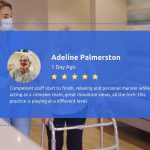Every dentist has an area of dentistry they love. If you don’t immediately recognize what that area is for you, just take a minute to think about it. What do you love doing? Which parts of dentistry are so enjoyable that they feel more like play than work?
Today, we’re looking at how you can do more of those things you love. Now, I want you to understand that doing what you love is in your patients’ best interests as well. Why? Because you’re simply better at doing what you love! So if you’re spending your time with your patients doing what you love the most, your patients will be receiving the best value services, making them happier and healthier too.
Here are 5 ways to do that from your very first consult.
1. Connect with your patient.
Before anything else, you need to connect with your patient as a person. Find something they are interested in that’s NOT related to dentistry and talk about that. This will help your patient feel more comfortable and in control.
2. Ask what you can do for your patient.
Next, you’ll need to find out what your patient wants. Are they just in for a cleaning? Do they have a toothache? Simply ask, “What can I do for you today?” Again, you’re giving the patient the feeling of being in control of their appointment and avoiding wasting time.
3. Use digital photos.
Now, to get your patient on the same page as you, take 6 digital photos of their whole smile, so you can take them on a tour of their mouth. Then you’re going to show them those photos on a nice tablet and find an excuse to leave them alone to examine their smile by themselves.
4. Ask for permission to share advice.
By now your patient may have seen things they didn’t before, so you’re going to ask if they would like you to go through the photos and identify the areas of concern you’ve seen. If they say yes, remember you have to put this in language they understand!
5. Share the consequences of refusing treatment.
Finally, ask if they are interested in treatment to address these areas of concern. You will need to explain the possible consequences of leaving these areas untreated, but leave the final decision up to them.
If you do these 5 things at the first appointment, you will likely be able to get more patients in for follow up appointments, and you can do more of what you love!
Check out the podcast where I talk about this in more detail here.









